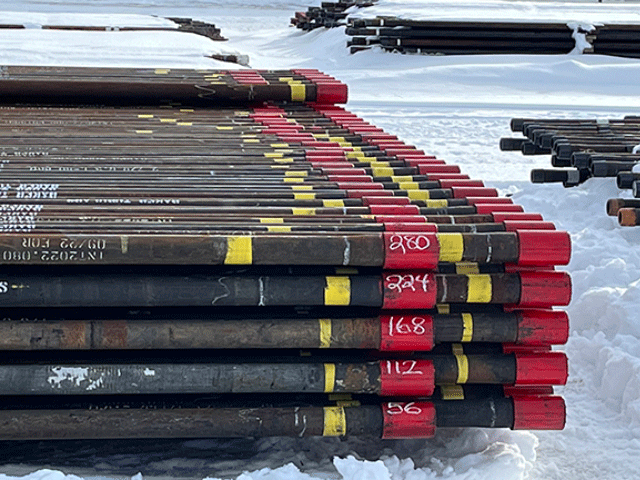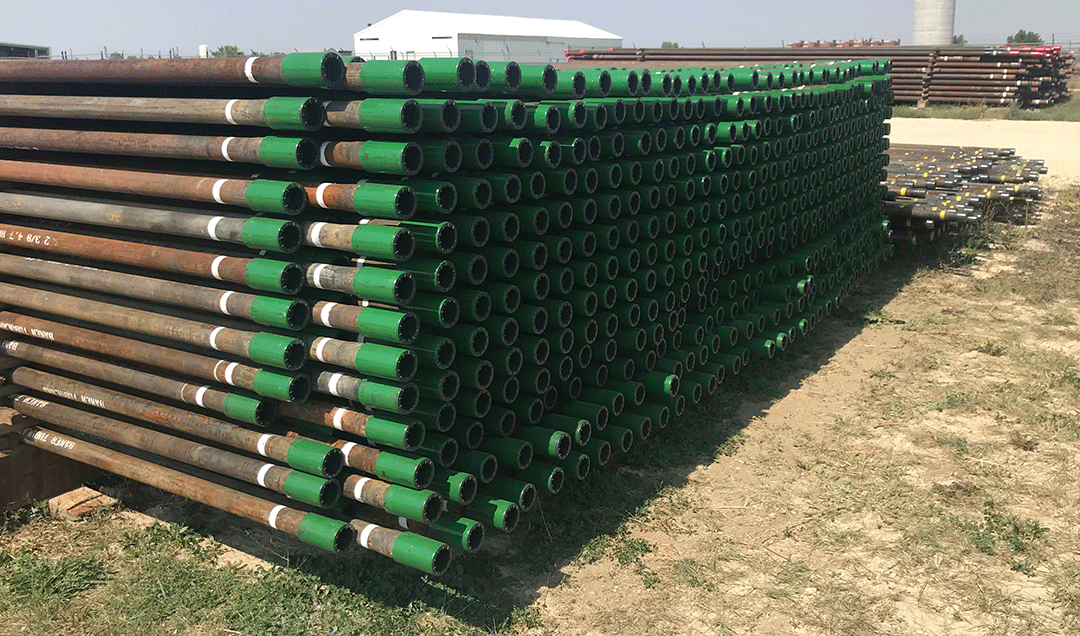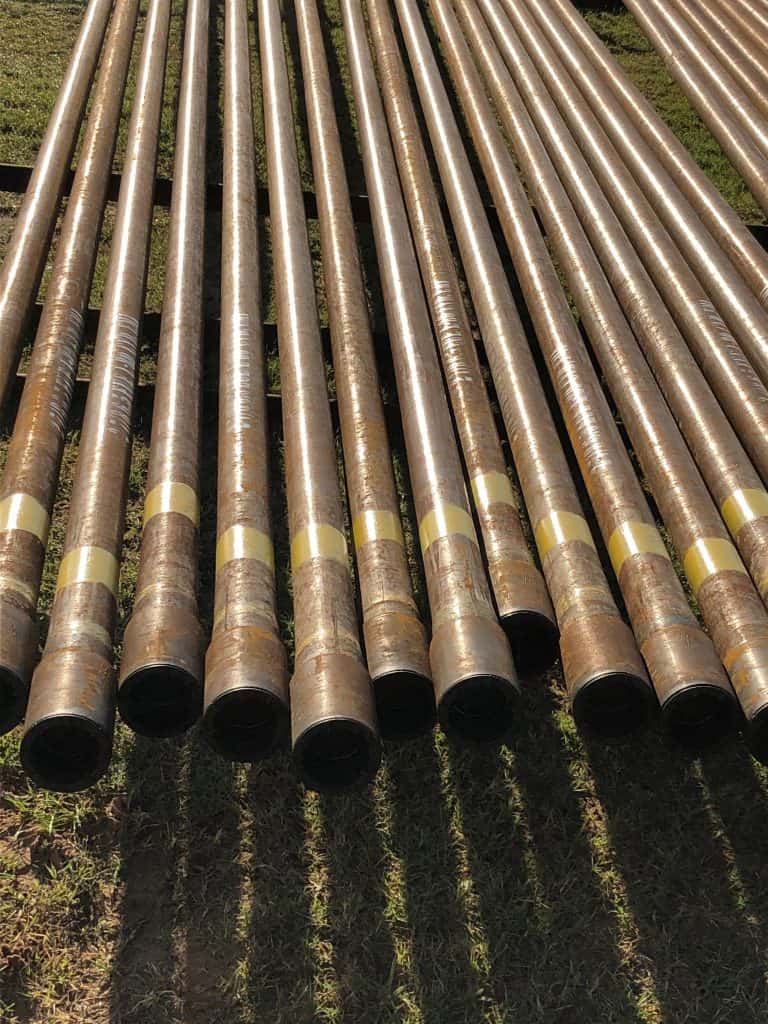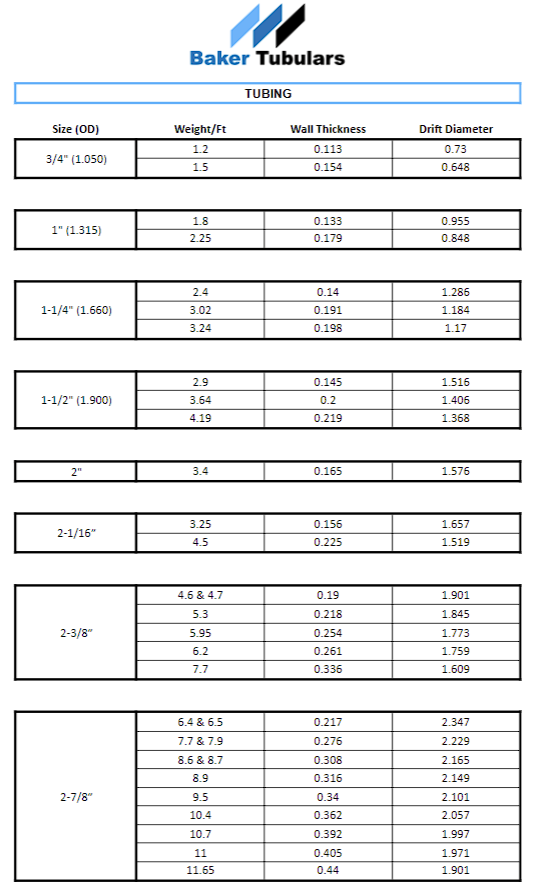What is OCTG?
Oil Country Tubular Goods


OCTG is the acronym for Oil Country Tubular Goods. OCTG is tube or pipe which is used in the production of oil and gas. This pipe is used both onshore and offshore for the production of oil and gas. Oil Country Tubular Goods are a collection of rolled metal products such as drill pipe, casing and tubing, line pipe, structural pipe, couplings, connections and accessories which are used in the production of oil and gas. These OCTG products are manufactured according to the specifications set by API (American Petroleum Institute).
Under the API specifications, OCTG oil and gas pipe is graded under more than ten different grades, depending on their performance and the materials used. OCTG products can be either seamless or welded. They are available in different sizes and lengths. Baker Tubulars offers both seamless and welded.
What are the different types of OCTG pipe?
Casing pipe is used for lining the borehole which has been dug into the ground for procuring oil or gas and stabilizing it. A casing pipe is subject to axial tensions and high internal pressures which are generated while pumping oil or gas. They also have to bear the external pressures arising from the surrounding rocks underground.
OCTG casing is large diameter pipe which needs to be cemented into the borehole. The diameters of OCTG casing pipe range from 4.5″ to 20″. The pipe is well-cemented and stands strong, it acts as the structural component of the well and offers hole integrity. The casing prevents the well from collapsing when the drilling process is on. Well cemented casing should last the life of the well.
Casing is required during the drilling process as it is necessary for the following:
- holds on to the drill string, preventing the unsteady upper formation of the well from caving in
- prevents contamination
- offers an internal bore which facilitates easy installation of the production equipment
- prevents any form of fluid (oil) loss.
- helps seal off the high-pressure zones from the surface of the earth.
The different types of casings are conductor casing, surface casing, intermediate casing, production casing, liner and liner tieback casing.
Tubing pipe is pipe which is placed inside the wellbore through the casing pipe. It is responsible for the transportation of the hydrocarbons to the surface. Tubing pipe is used for transporting natural gas or crude oil after the drilling is complete. It transports the gas and oil to the facilities for further processing. Similar to the drill pipe and casing, tubing pipe also has to withstand high pressure during the extraction process, and hence they are required to meet industry standards. Tubing pipe are available in various sizes ranging from 1 1/4” to 4.5”.
Tubing protects the casing from wear and tear caused by corrosive fluids, sand, paraffin, and more. In case of damage or breakage, tubing pipe can be easily replaced.
Line pipe is very strong carbon steel pipe which are used for the transportation of various petroleum products, natural gas, oil and water. API 5L is a specification of American Petroleum Institute which regulates and defines the standard for the dimension, physical, mechanical and chemical properties of the steel used for the manufacturing of line pipe. Numerous pipe manufacturing companies across the globe follow the API 5L guidelines for the OCTG line pipe used in the Oil and Gas industry. OCTG line pipe is available in a wide range of diameter sizes ranging from 2 inches to 48 inches.
Drill pipe is seamless pipe which is rotated in order to circulate the drilling fluid. This pipe is useful for pumping the drilling fluid back up the annulus. The annulus is the space in the oil well between the casing and the piping. Easy circulation of the fluid within the well is possible because of the annulus. The drill pipe is subject to axial tension since high torque is required for rotating the down-hole assembly and drilling the fluid and circulating it. The OCTG drill pipe needs to be extremely strong as they have to bear a high amount of stress underground. The drill pipe is used at the drilling rigs and they are available in different sizes and different qualities. OCTG drill pipe needs to be sturdy and meet the standards of API 5DP and API SPEC 7-1.
Structural pipe is steel pipe which has not been pressure tested which is used in many applications across various industries. Structural pipe sizes range from 1/2″ to 48″ outer diameter and it is made from carbon, stainless, or galvanized steel. Structural pipe is also referred to as structural tubing.
Poly pipe, also known as PE, polyethylene pipe or polyethylene tubing, is thermoplastic pipe that is flexible, lightweight, and durable. It is utilized in applications such as water irrigation, gas lines, slurry transport, cable conduits and more. Baker Tubulars carries poly pipe ranging from 1″ to 12″ in all SDR grades.
Are you looking for OCTG products?
If you are looking for the OCTG shipped directly to your project site or for pick-up, contact us today for a quote. Rigorous testing and inspection ensure that all Baker Tubulars OCTG products meet or exceed standards and performance expectations.
Baker Tubular Products are tested for:
Tensile strength – the maximum stress the product materials can withstand
Hardness – the product material’s resistance to any form of deformation particularly while penetrating a hard surface
Hardenability – the ability of the steel to harden during rapid cooling
Ductility – the ability of the steel to deform plastically without cracking or breaking down

View Our Pipe Sizes
View a list of our OCTG casing and tubing sizes and specifications. Our casing and tubing chart includes sizes, weights, wall thickness and drift diameter.
BUY OCTG
Contact us with your project's OCTG requirements and we will provide you a quote. We supply OCTG anywhere in the United States and Canada.
